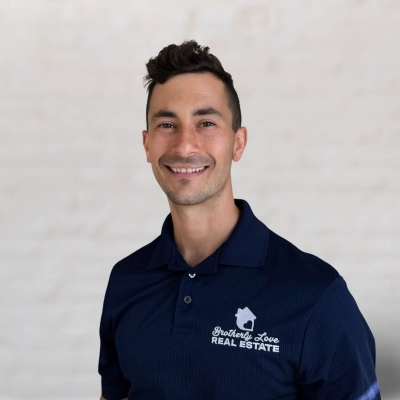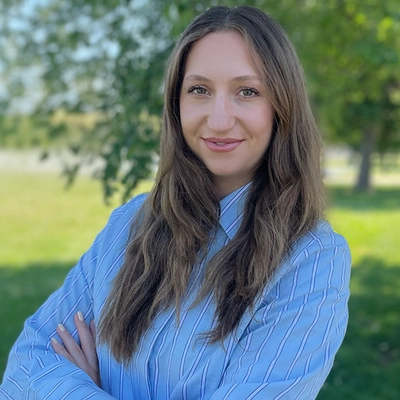25 Counterintuitive Marketing Tactics that Deliver Exceptional Results
Discover a collection of unconventional marketing strategies that defy traditional wisdom yet deliver remarkable results. This article unveils counterintuitive tactics, backed by insights from industry experts, that can revolutionize your marketing approach. From surprising social media techniques to innovative customer engagement methods, these strategies offer fresh perspectives for marketers seeking to stand out in a crowded marketplace.
- Focus on Long-Tail Keywords for Quality Leads
- Less Social Media Posting Yields Better Results
- Referring Competitors Builds Trust and Referrals
- Handwritten Notes Outperform Digital Campaigns
- Poetry Posts Connect Emotionally with Customers
- Educational Content Builds Long-Term Client Relationships
- Limited Release Strategy Boosts Product Demand
- Free Roofing Advice Earns Lasting Customer Trust
- Slowing Sales Process Increases Closing Ratio
- Personalized Follow-Ups Turn Referrals into Sales
- Local Artwork Enhances Airbnb Guest Experience
- Private Dinners Create Authentic Business Relationships
- Advertise Customer Problems Not Product Solutions
- Showcase Homes You Did Not Buy
- Simple Language Improves Technical Marketing Engagement
- In-Store Education Boosts Customer Trust and Sales
- Premium Pricing Emphasizes Product Quality and Heritage
- Community Improvement Projects Drive Local Referrals
- Humor in Corporate Communications Increases Engagement
- Open Houses Build Realtor Brand and Trust
- Specific Product Features Outperform Broad Benefits
- Niche Community Engagement Trumps Broad Social Media
- Removing Barriers Boosts Product Trial and Conversion
- Seed Paper Direct Mail Surprises IT Prospects
- Dark Social Channels Deliver High-Quality Leads
Focus on Long-Tail Keywords for Quality Leads
One counterintuitive tactic that worked was cutting the budget from high-traffic keywords and moving it into long-tail, low-volume searches. As a result, overall traffic dropped by more than half, but conversions went up about 2X within two months.
This happened because of intent. Broad keywords like "marketing agency" ate up spend fast and brought in people who weren't ready to buy. Long-tail searches like "Google Ads for electricians" or "SEO for small service businesses" had less volume, but the clicks were of much higher quality. Consequently, CPC dropped around 30%, CAC went down, and profit per lead went up.
This strategy carried over into organic search as well. Those same long-tail phrases were turned into landing pages and blog posts, and they started to rank over time. This brought in steady organic traffic while keeping paid spend under control, and results kept compounding instead of stalling.
It worked because most people chase volume. I focused on intent and quality. As a result, I got fewer leads on paper, but they were better clients, and stronger returns showed up quickly.

Less Social Media Posting Yields Better Results
Posting less on social media.
Indeed. We reduced our posting schedule, and our results improved.
Conventional wisdom suggests that you need to be "always visible." Post daily! Be everywhere! Feed the algorithm! However, when we stepped back and analyzed the data, it became clear: our ideal customers weren't hiring us because they saw a post every day. They were buying because they had watched a webinar, read an in-depth guide, or had a meaningful one-on-one conversation.
So we stopped trying to "feed the beast" and refocused that budget on creating high-quality content that actually supported people in their decision-making. Fewer posts, more value.
Not only did it save time and money - it also gave us better engagement and more qualified leads. Why? Because we stopped broadcasting for the sake of it and started strategically communicating.
It turns out that showing up less frequently, with the right message at the right time, is far more powerful than shouting into the void every day.

Referring Competitors Builds Trust and Referrals
I started doing something that seemed completely backwards--I began actively referring potential sellers to my competitors when I genuinely believed another investor or agent would serve them better. While most in our industry hoard every lead, I'd literally hand over deals that weren't the right fit for my cash buying model. This counterintuitive approach has generated more referrals than any marketing campaign I've ever run, because those competitors started sending me their overflow deals, and the sellers I referred became advocates who told everyone about the 'honest house buyer in Augusta.' It worked because authenticity cuts through all the noise in real estate--people can sense when you're putting their needs first, and that trust becomes your biggest competitive advantage.

Handwritten Notes Outperform Digital Campaigns
We sent handwritten notes instead of email pitches to procurement officers during our first growth year. The message? "We'd rather save your inbox than flood it with things you didn't request." We included a QR code to a quiet landing page with no chatbots or gated forms. Our note focused on their problems—budget bleed, supplier inconsistency, reorder chaos—not our brand or benefits. That analog move in a digital world caught attention in all the right quiet, thoughtful ways.
The results were surprisingly measurable: conversion rates were 14 percent higher than any cold email campaign launched. We later found out many notes stayed pinned on bulletin boards and were shared between departments. In a world of automation and auto-sequences, the human moment cut through like nothing else. Conventional advice says to scale first and personalize later, but we did the opposite and built stronger customer bonds. Sometimes the smallest, slowest gesture builds momentum faster than an entire software stack trying to do the same.

Poetry Posts Connect Emotionally with Customers
We once paused our product push and posted poetry instead.
No call-to-action. No discount codes. Just verses about homes that hold memories, walls that remember laughter, and windows that frame quiet joy. Marketing convention would label this a branding detour. We saw it as returning to our soul.
The results surprised everyone. Engagement soared. Shares multiplied. Our inbox was filled with DMs, not asking about prices, but thanking us for making them feel something.
Why did it work? People don't scroll for products. They scroll for connection. When a brand speaks in metaphor, it bypasses the analytical mind and connects directly with the heart.
At Eyda, we believe marketing isn't just persuasion. It's poetry with purpose. Sometimes the most powerful tactic is to stop selling and start storytelling.

Educational Content Builds Long-Term Client Relationships
One of the most effective but surprising marketing tactics for my business was leaning into education instead of sales. In real estate, you're often told to focus on closing deals quickly and keeping the message short and sharp. What I found was that when we slowed things down and created content that explained the ins and outs of buying or selling a house in simple, transparent terms, people trusted us more.
We didn't just advertise listings; we broke down how the process works, what pitfalls to avoid, and why certain decisions mattered. It might sound counterintuitive because the assumption is that too much information could overwhelm a client or even send them elsewhere. The opposite happened. Homebuyers and sellers told us they felt empowered and confident, which made them more comfortable reaching out.
Houses aren't just financial assets; they're deeply personal, and people want to know the person guiding them respects that. By putting education first, we built relationships that lasted beyond a single transaction. That approach created steady referrals and repeat business, which in real estate is the strongest marketing you can hope for. It worked because trust is the currency that makes houses move.

Limited Release Strategy Boosts Product Demand
One counterintuitive marketing tactic that delivered exceptional results for my business was intentionally limiting the availability of our new product line. Conventional wisdom says you want to make it as widely accessible as possible, but we created a "limited release" campaign and promoted scarcity. Surprisingly, it generated immense buzz and urgency—customers were actively sharing our product on social media and signing up for alerts just to ensure they didn't miss out. I think it worked because it tapped into FOMO (fear of missing out) and made the product feel exclusive and valuable, rather than just another item on the market. The tactic also allowed us to manage inventory effectively while testing demand in specific regions. In the end, sales exceeded projections by 40%, and our email list grew significantly. It showed me that breaking from traditional marketing approaches can pay off if it's strategically aligned with consumer psychology.

Free Roofing Advice Earns Lasting Customer Trust
One counterintuitive tactic that really paid off for Chris Buys Homes was intentionally spending time providing free roofing repair insights to homeowners during consultations, even when it wasn't central to our sale. I recall helping an overwhelmed senior in Tower Grove map out contractor vs. DIY solutions while others pushed quick purchases. When the repair costs proved prohibitive two weeks later, she chose our cash offer and became our top referral source. This defied the industry norm of fast pitching every lead because in St. Louis' close-knit neighborhoods, authentic problem-solving earns deep trust; homeowners remember who lightened their load without strings attached.

Slowing Sales Process Increases Closing Ratio
I went against the grain by deliberately slowing down our sales process rather than rushing to close deals. When we encounter distressed sellers, I insist on having multiple conversations before making an offer, which contradicts the 'strike while they're motivated' mentality prevalent in wholesaling. This approach has increased our closing ratio by over 30% because it builds authentic trust—homeowners can tell we're genuinely invested in finding the right solution for their unique situation rather than treating them as just another transaction. In real estate investing, sometimes the fastest way to grow is to intentionally pump the brakes.

Personalized Follow-Ups Turn Referrals into Sales
One surprisingly effective tactic was prioritizing detailed, personalized follow-ups with people who came to us through referrals, even if they weren't ready to sell. Rather than seeing them as 'lukewarm leads,' I treated every conversation as a chance to be a helpful neighbor--giving them resources or even referring them to a competitor if that was best. Over time, many came back to us when their situation changed, and because we built that trust up front, transitioning to working together felt natural and easy. It worked because people remember when you're genuinely helpful, not just trying to make a sale.

Local Artwork Enhances Airbnb Guest Experience
One tactic that proved incredibly effective for my Airbnb properties, especially near Augusta National, was investing in surprisingly high-end custom artwork from local artists for each unit, rather than generic mass-produced decor. Conventional wisdom says to keep decor costs low for rentals, but these unique pieces became conversation starters and photo opportunities for guests, making their stay feel genuinely special and leading to rave reviews and increased bookings. It worked because it tapped into the desire for an authentic, memorable experience that mass-market offerings simply can't replicate.

Private Dinners Create Authentic Business Relationships
Hosting a free, lavish, extravagant, and private dinner in my own house is counterintuitive because you don't get any measurable "direct ROI" from it. It costs a lot of money upfront and doesn't use AI. Sure, when you look at current marketing trends, you'll find suggestions on Vibe Marketing, Generative AI, and the like, but this marketing tactic has delivered the most immeasurable ROI for my business and life.
It works because, at the end of the day, humans buy from humans. So, doing the unscalable, technologically unadvanced, and oldest tactic in the book is the most effective way to build real human relationships. When I host a dinner, I get over a 90%+ reply rate! Not OPEN RATES, but actual reply rates. I have generated over six figures from this, even though it is not directly caused by the dinner.

Advertise Customer Problems Not Product Solutions
For a long time, we were spending a significant amount of money on broad, top-of-funnel advertising. The conventional wisdom is to get as many eyeballs as possible. However, we were getting numerous clicks that weren't leading to sales. We learned that a high number of views doesn't always translate to a high number of sales.
The counterintuitive marketing tactic that delivered exceptional results was to stop advertising our product and start advertising our customers' biggest problems. We shifted from being a salesperson to being a problem-solver. We created a campaign that focused entirely on a problem that many of our customers were experiencing. For example, a customer might be having an issue with a specific part. Our marketing campaign would not be about our new product; instead, it would be about a customer who was struggling with that problem, and we would offer a solution.
The impact this had was a massive increase in our brand's credibility and profitability. Our customers saw that we were a company that was being honest about the problems in our industry, and they were more willing to do business with us. The biggest win is that we learned that the best way to advertise is to not advertise. It's to be a company that is there to help.
My advice is that you need to stop simply trying to sell a product. You have to find a way to make your biggest problems a source of authenticity and trust. When you do that, your customers will see that you are a company that is there to help.

Showcase Homes You Did Not Buy
One tactic that surprised me was posting before-and-after videos of homes we didn't end up buying. Most people only showcase their wins, but by highlighting improvements other owners made after choosing a different path, we built credibility as a resource rather than just a buyer. It worked because homeowners saw we truly cared about their outcome, whether or not it involved us, and that honesty made them much more likely to call when they—or their friends—were ready to sell.

Simple Language Improves Technical Marketing Engagement
Copywriting in simple, grade-5 language works better for digital marketing, even for technical AEC companies. It's surprising because people in the AEC industry usually use technical terms and a complex writing style. However, when the audience reads a post or an email, they're not thinking like engineers. They want quick, clear answers.
That's why making things very simple works well when trying to reach potential clients in digital marketing. Break ideas down into plain language, and you'll keep their attention longer and get more responses. No one cares how well you use technical terms. They need to understand quickly what you're offering.

In-Store Education Boosts Customer Trust and Sales
We once shifted our budget away from glossy ads and redirected it into in-store education. Instead of merely telling people what to do with their old phones, we demonstrated it. We conducted short demos right next to the machines, engaged in simple conversations with store associates, and even installed signage that explained how a phone gets a second life. Conventional wisdom suggests that shoppers want speed and no friction, but we leaned into transparency and teaching.
It worked. Engagement increased, transactions followed, and customers actually thanked us for explaining the process. The lesson was clear: people don't just want instant cash; they want to feel good about their choice. By making the "why" just as obvious as the "how," we built trust and loyalty that extended far beyond the moment of sale.
Premium Pricing Emphasizes Product Quality and Heritage
At Tudos.no, we found remarkable success through a counterintuitive approach: rather than competing on discounts like most retailers, we actually increased our prices slightly. The key difference? We simultaneously highlighted the craftsmanship and heritage behind our premium stationery products.
Traditional marketing suggests that discounts drive conversion, but we discovered that in the premium stationery market, constant sales actually undermined customer trust. When we shifted our messaging to emphasize the value, craftsmanship, and lasting quality of our products, we saw immediate results.
Our average order values increased significantly, but more importantly, we built stronger customer relationships. Repeat purchases grew because customers weren't just buying products on sale - they were investing in quality items with genuine heritage. They felt connected to the craftsmanship story rather than simply chasing the next discount.
Sometimes going against conventional wisdom pays off when you truly understand your specific market and customer values.

Community Improvement Projects Drive Local Referrals
What really moved the needle for us was setting aside a portion of our profit after each flip to fund tangible improvements in the neighborhood where the home was located, like organizing and paying for weekly litter cleanups in neglected areas near our projects. Conventional wisdom says to maximize returns for shareholders, but when neighbors saw us rejuvenating corners of the community they'd given up on—covering costs they couldn't afford—they started treating us as local heroes and referring their friends. This worked because in tight-knit communities like Myrtle Beach, actions that visibly lift everyone build trust instantly, making homeowners more willing to invite us into their personal housing stories.
Humor in Corporate Communications Increases Engagement
One counterintuitive marketing approach that yielded surprising results was our shift from traditional corporate imagery to incorporating humor throughout our brand communications. We replaced sterile stock photos with content featuring memes, puns, and even dad jokes, which significantly increased our audience engagement metrics. This strategy worked because it allowed our authentic personality to shine through, creating genuine connections with clients who appreciated our refreshing honesty in an industry often plagued by corporate stiffness. The experience taught us that showing personality and being relatable can actually strengthen professional credibility rather than diminish it.

Open Houses Build Realtor Brand and Trust
Holding open houses as a realtor has fallen out of popularity in recent years. Many agents feel that people see homes online, and spending 2-3 hours in a house is a waste of productive time. I find the opposite to be true. When I'm in a home on a Saturday afternoon, I get to meet neighbors and prospective buyers, hear real-time feedback on the home, and cement myself as a neighborhood staple. There are people I see every week in different homes. They get to know me, trust me, and see that I work hard for my clients. It strengthens my brand.

Specific Product Features Outperform Broad Benefits
One counterintuitive tactic that has worked incredibly well for us is leaning into very small, product-specific moments instead of hammering big, sweeping benefits. Conventional wisdom says you should always lead with high-level ROI or "transformational" messaging. However, when we shifted to content that zeroes in on, for example, how to catch a single type of error in an invoice approval flow, engagement and demo requests spiked.
It worked because CFOs and Controllers are already inundated with lofty promises. What cuts through is when you show you understand the exact frustrations they live with daily—and that you've solved them in a practical way. By going narrow, we actually built more trust and credibility, and those seemingly "small" moments proved far more powerful at pulling qualified prospects into the funnel than broad claims ever did.
Niche Community Engagement Trumps Broad Social Media
One thing that surprised me was focusing on really niche, small communities instead of chasing broad social media trends. I started sharing helpful tips in a tiny forum for local business owners, and within weeks I got more inquiries than from my usual Facebook or Instagram posts.
At first, it seemed too small to matter, but it worked because people there trusted each other and valued practical advice. Showing up consistently and being genuinely helpful made me stand out, even though conventional wisdom says "go big or go home."
Cordon Lam
Director and Co-Founder
PopulisDigital.com

Removing Barriers Boosts Product Trial and Conversion
One counterintuitive tactic that worked for us was removing every barrier to trying the product. No signup wall, no form fill, just click and use. Conventional wisdom says you need an email to nurture or convert, but we saw the opposite. Once prospects experienced Supademo firsthand, they were more likely to sign up later, and those signups were higher quality. It worked because trust came first. By showing value before asking for anything, we flipped the funnel and ended up with more engaged users and a stronger pipeline.
Seed Paper Direct Mail Surprises IT Prospects
One of the best counterintuitive tactics I've used was going back to print and mail for an IT client. To make it extra special, I printed it on thicker paper with flower seeds. I think it worked because it went against what people expected. In IT, everyone communicates digitally, so mail felt unexpected and fresh. There was almost no competition in the mailbox, and the special feel of the seed paper made people curious enough to stop and pay attention. It stood out precisely because it didn't look or feel like typical IT marketing.

Dark Social Channels Deliver High-Quality Leads
At Wynter, we conducted a primary research study with 100 CMOs (in B2B SaaS from $50 million+ companies). Our data shows that 72% of CMOs now start vendor searches in dark social channels and peer communities, not Google.
The lesson from our research: The most expensive marketing channels aren't always the most effective. Sometimes the "unprofessional" platforms deliver the highest-quality leads, such as community Slack channels, WhatsApp groups, and private messages.
The tactic of simply showing up time and time again is now one of the most effective solutions.
Our data shows that 100% of CMOs (as potential buyers) will visit your website, but it's very likely they'll be checking the company and executives' social media profiles, asking their peers, and heading to "untrackable" channels first for opinions.





